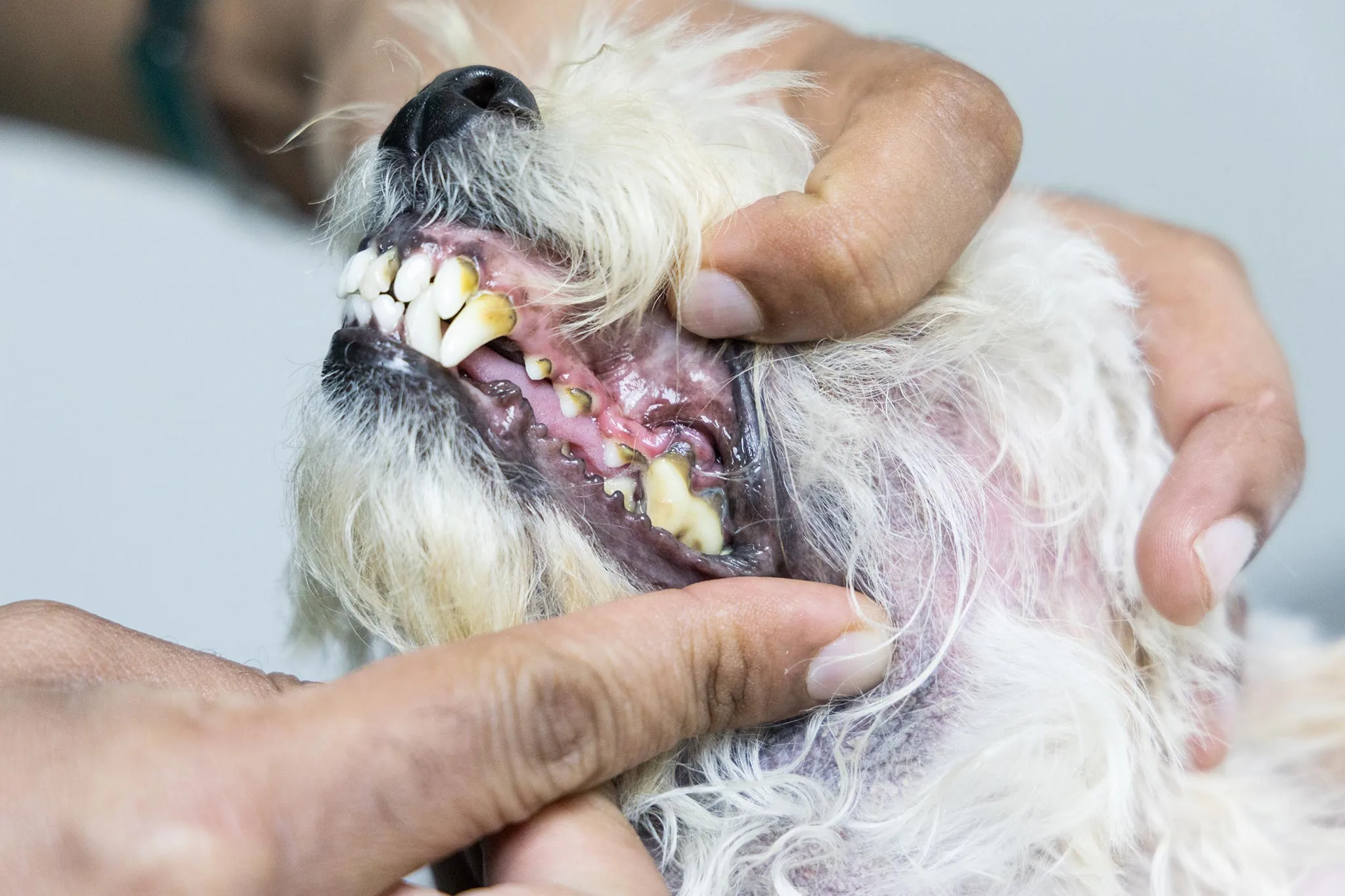Gingivitis in Dogs: Symptoms, Causes, and Prevention
When it comes to taking care of our dogs, we often think about their diet, exercise, and love we give them. But, how much do we know about their dental health? This blog is all about gingivitis in dogs – a common but often overlooked problem that can affect their health and happiness. We’ll explore what gingivitis is, the signs to watch out for, what causes it, and most importantly, how we can prevent it. If you have concerns or need more details, we encourage you to reach out to us at Riverstone Animal Hospital in Canton, GA. Give us a call at (770) 479-7141 to chat with our team or to schedule an appointment. Let’s keep those doggy smiles bright and healthy together!

Understanding Gingivitis in Dogs
Gingivitis is essentially gum inflammation that affects many dogs. It’s the early stage of gum disease, which can lead to more serious health issues if not addressed. The gums become swollen, red, and may bleed easily. You might wonder why this matters. Well, beyond causing discomfort and bad breath, if left untreated, gingivitis can lead to periodontal disease, which can damage the gums, teeth, and even affect your dog’s overall health.
The good news is that gingivitis is preventable and manageable with proper care. It starts with knowing what to look for and how to maintain good oral hygiene for your dog. Regular check-ups with your vet can also catch gingivitis early before it progresses.
Signs and Symptoms to Watch For
Spotting gingivitis early can make a big difference in your dog’s health. Some signs to keep an eye on include:
- Red, swollen, or bleeding gums
- Bad breath that’s not just “dog breath”
- Visible plaque or tartar on the teeth
- Difficulty eating or chewing toys
- Pawing at the mouth or face
If you notice any of these symptoms, it’s a good idea to get in touch with us at Riverstone Animal Hospital. Early detection can prevent more serious problems and keep your dog happy and healthy.
The Causes of Gingivitis
Understanding what causes gingivitis can help in preventing it. The main culprit is plaque – a film of bacteria that forms on the teeth. If not removed, plaque hardens into tartar, which can irritate the gums and lead to gingivitis. Factors that can increase the risk of gingivitis include:
- Poor oral hygiene
- Lack of professional dental cleanings
- Age (older dogs are at higher risk)
- Certain breeds with specific dental traits
- Diet and chew habits
It’s not just about brushing teeth; it’s about understanding and managing these risk factors to keep your dog’s mouth healthy.
Prevention is Key
Preventing gingivitis is all about good oral care routines. Here are some steps you can take:
- Brush your dog’s teeth regularly with dog-specific toothpaste.
- Provide dental chew toys and treats that help reduce plaque and tartar buildup.
- Ensure a healthy diet that supports dental health.
- Schedule regular dental check-ups and cleanings with your vet.
Preventative care doesn’t just keep your dog’s teeth clean; it’s an investment in their health and happiness.
When to See a Vet
If you suspect your dog has gingivitis, or if you’re looking to prevent it, scheduling a visit to Riverstone Animal Hospital is a smart move. We can offer professional cleanings, check for any signs of dental disease, and provide you with tailored advice on how to care for your dog’s teeth at home.
Remember, gingivitis in dogs is manageable and preventable. With your care and our expertise, we can work together to ensure your dog has a healthy mouth for years to come. For more information or to make an appointment, give us a call at (770) 479-7141. Let’s keep those tails wagging and those smiles shining!
